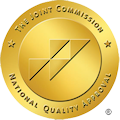Meth eyes look bloodshot, watery, and unusually dilated. Methamphetamine use can have severe effects on a person’s eyes. The appearance of meth eyes is not just a cosmetic issue; it can also be a sign of more significant health problems.
Additionally, frequent meth use can lead to rapid eye movement, known as nystagmus, giving the eyes a jittery or darting appearance. It’s essential to note that these physical signs can indicate serious health issues and substance abuse problems, and seeking help from medical professionals or addiction specialists is crucial for anyone experiencing these symptoms.
Overall, while the appearance of meth eyes may be one of the most visible signs of methamphetamine use, it is essential to understand that this is just one aspect of the drug’s detrimental effects on both physical and mental health. California Addiction Treatment can assist individuals with meth addiction in Huntington Beach.
What Are Visible Signs of Meth Use?
Visible signs of meth use may include sores or scabs on the face and body, skin picking, tooth decay, and dry mouth. These symptoms occur due to the drug’s effects on the body, such as decreased blood flow and saliva production. Additionally, long-term meth use can lead to severe dental problems known as “meth mouth,” where teeth become severely decayed and damaged.
Moreover, quitting methamphetamine use can result in severe withdrawal symptoms that may require medical supervision. These symptoms can include intense cravings, depression, anxiety, fatigue, and even psychosis. It is crucial to have a support system and professional assistance when attempting to quit meth use to increase the chances of successful recovery.
What Causes Meth Eyes?
The increased production of chemicals dopamine and norepinephrine, dry eye syndrome, lack of blood flow, and oxygenation, and decreased tear production causes meth eyes. Dilated pupils cause the eyes to appear larger than usual. Additionally, meth can cause blood vessels to constrict, leading to reduced blood flow and oxygenation to the eye tissues. This lack of nourishment can result in red or bloodshot eyes.
There are several reasons why meth use can cause changes in a person’s eyes. Another of the primary reasons is how the drug affects the body’s nervous system. Methamphetamine is a powerful stimulant that works by increasing levels of dopamine and norepinephrine, neurotransmitters responsible for feelings of pleasure and alertness.
Furthermore, the drug can also cause dry eye syndrome, leading to irritation and redness. Meth users often experience decreased tear production, resulting in dry and itchy eyes. The combination of all these factors can create the characteristic appearance commonly referred to as “meth eyes.”
How Long Do Meth Eyes Last?
The duration of meth eyes varies depending on several factors, including the dosage and frequency of use. In most cases, the effects on a person’s eyes will be noticeable immediately after consumption and can last for hours or even days. However, with chronic use or binges, these symptoms may become more permanent.
If a person frequently uses meth, their pupils may remain dilated for extended periods, making them more vulnerable to bright light and causing vision problems. Additionally, prolonged meth use can damage the optic nerve and affect a person’s ability to see correctly.
Can Meth Eyes Cause Permanent Damage?
Yes, prolonged meth use can cause permanent damage to a person’s eyes. The constriction of blood vessels can lead to long-term issues with blood flow and oxygenation, resulting in vision problems such as blurred vision or even blindness.
Additionally, the chemicals in methamphetamine can also damage the sensitive tissues of the eye, including the cornea and retina. This damage can be irreversible and may require medical intervention or surgery. Furthermore, the behavior and lifestyle changes associated with meth use can also have a severe impact on a person’s overall eye health.
What is Meth Addiction?
Meth addiction is a severe form of substance abuse disorder that involves the uncontrollable and compulsive use of methamphetamine. It is a chronic, relapsing condition that not only affects a person’s physical health but also their mental and emotional well-being.
Individuals with meth addiction often experience intense cravings for the drug and may engage in risky behaviors to obtain and use it. Over time, the brain becomes dependent on meth, making it difficult for an individual to function without it. Meth addiction can have devastating effects on a person’s life, including their relationships, career, and overall health.

Understanding Methamphetamine Addiction
Methamphetamine addiction is a problem that can have devastating effects on an individual’s overall health and well-being. It is a highly addictive substance that affects the brain’s reward system, making individuals more likely to continue using despite the consequences.
Methamphetamine is a potent stimulant that can cause damage to the brain and other vital organs in the body. It can also increase the risk of heart attacks, strokes, and other cardiovascular issues.
The intense euphoria and energy boost produced by meth use can be enticing for some, but it comes at a high cost. As tolerance builds over time, users often increase their dose or frequency of use, leading to harmful physical and psychological effects. This cycle of addiction can be challenging to break without proper treatment and support.
What are the Signs and Symptoms of Meth Addiction?
Along with physical signs, meth addiction can also cause a range of behavioral and psychological symptoms. These may include:
- Increased agitation or irritability
- Paranoia or hallucinations
- Changes in mood or personality
- Decreased appetite and weight loss
- Impaired judgment and decision-making abilities
If you or someone you know is experiencing these symptoms, it’s essential to seek help from a medical professional or addiction specialist. Meth addiction is a treatable condition, and with proper support and treatment, recovery is possible. In addition to seeking medical help, it’s also crucial for individuals struggling with meth addiction to have a support system of friends and family who can offer understanding and encouragement throughout their journey towards recovery.
Seeking Help for Meth Addiction at California Addiction Treatment
If you or someone you know is struggling with methamphetamine addiction, seeking help from professionals is crucial. Treating meth addiction requires a comprehensive approach that addresses both physical and psychological aspects of the disease.
Various forms of treatment are available, including therapy, medication-assisted treatment, and support groups. These treatments aim to help individuals understand their addiction, develop coping skills, and make positive changes in their lives.
It’s also essential to address any underlying mental health issues that may contribute to the addiction. Many individuals struggling with meth use also have co-occurring disorders such as depression or anxiety. Treating these disorders alongside substance abuse can improve the chances of long-term recovery.
Treatment Options at California Addiction Treatment
We understand that addiction is a complex disease that requires personalized and comprehensive treatment. Our team of experienced professionals provides evidence-based therapies and holistic approaches to help individuals overcome meth addiction.
We offer various treatment options, including detoxification, residential programs, and aftercare support. Our goal is to guide individuals toward lasting recovery by addressing not only the physical effects of meth use but also the underlying mental and emotional factors contributing to their addiction.
If you or a loved one is struggling with meth addiction, please reach out for help today. Recovery is possible, and we are here to support you every step of the way. Remember, it’s never too late to take control of your life and start toward a healthier, happier future.
The first step in treating meth addiction is often medical detox, where the drug’s removed from the body under medical supervision. This process can be challenging and may require medication and support to manage withdrawal symptoms.
Behavioral therapy, such as cognitive-behavioral therapy (CBT), can help individuals identify and change harmful thought patterns and behaviors associated with meth use. Therapy can also address underlying issues that may contribute to addiction, such as trauma or mental health disorders.
Cognitive behavioral therapy is a form of therapy that focuses on changing negative thoughts and behaviors to promote positive outcomes. This approach can be beneficial for individuals struggling with meth addiction, as it can help them develop coping strategies and relapse prevention techniques.
Support groups, such as Narcotics Anonymous, can provide a sense of community and understanding for individuals in recovery from meth addiction. These groups offer a safe space to share experiences and receive support from others going through similar struggles.
In some cases, prescription medication can help manage cravings and reduce the risk of relapse. However, this is used in conjunction with behavioral therapy and under the supervision of a medical professional.
Finally, ongoing support and relapse prevention strategies are crucial for maintaining long-term recovery from meth addiction. Relapse prevention includes regular therapy sessions, participation in support groups, and developing healthy coping mechanisms to manage triggers and cravings.
In addition to traditional treatment methods, some individuals may benefit from holistic therapies such as yoga, meditation, and acupuncture. Holistic practices can help reduce stress and promote overall well-being during recovery.

California Addiction Treatment Offers Meth Treatment Today
At California Addiction Treatment, we understand the complexities of meth addiction and the importance of personalized treatment plans. Our team of medical professionals and therapists provides comprehensive care for individuals struggling with substance abuse.
If you or a loved one is experiencing meth addiction, don’t hesitate to reach out for help. Recovery is possible with the support and resources. Remember, it’s never too late to seek help and make positive changes in your life. Contact us today to learn more about our treatment options and begin your journey toward lasting recovery.




